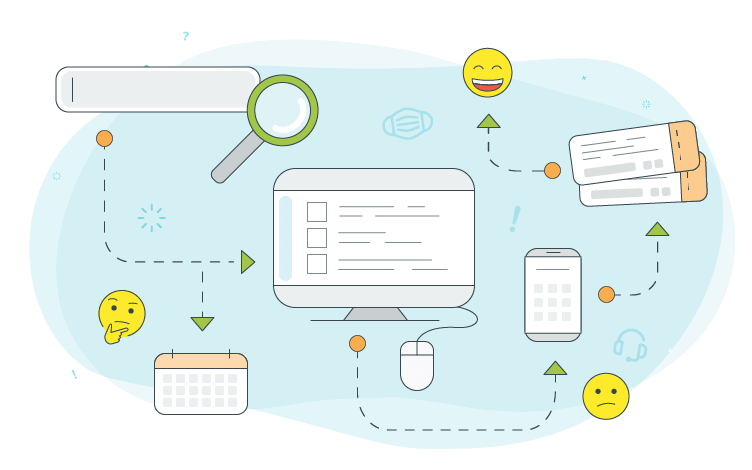COVID-19 has impacted customer needs and expectations, and changed business operations worldwide. The CX goals and plans you set out at the beginning of the year are most likely out-of-date and need adjusting to account for current consumer behavior.
To understand how to best manage customer experiences during the ongoing pandemic, you should analyse and compare your own customer data. Find out how customer interactions have changed, how their requirements or expectations differ, and how their overall feedback has altered.
There are actions you can take immediately to help you maintain customer trust and improve CX.
If you’d like any help analyzing your VoC insights, get in touch with our experts today who will be happy to assist.
DON’T PRETEND EVERYTHING IS NORMAL
Because it’s not. Continuing to run business as usual will cost you your reputation and customers.
In fact, 71% of consumers say they will forever lose trust in a company which places profits over people during this crisis (Edelman 2020).
Changes in how your business communicates and operates are necessary because consumers have changed. Here’s how:
- 40% have less disposable income (PwC 2020)
- They prefer to spend money on leisure closer to home
- They put meaningful experiences over material products
- They are concerned about safety and security
- They have a greater need for convenience and flexibility
These changes in consumer buying habits and attitudes are likely to remain post-pandemic, so it’s even more important you adapt your CX strategy to anticipate and meet their needs.
MAP OUT THE CUSTOMER JOURNEY
Identify new challenges and pain-points, have a closer look at how and at what stages your customers interact with you.
You’ve most likely noticed a lower number of face-to-face interactions and a surge in customers contacting you online or via telephone.
Seamless omni-channel experiences are vital in building trust. According to Adobe, companies with the strongest omni-channel customer engagement strategies enjoy a 10% year-over-year growth.
Ask yourself – Do all my customers receive the same quality experience regardless of the channels they use?
Make sure everything from the initial conversation to experiences on the day are integrated and personalized. After all, can you afford not to?
IMPROVE YOUR DIGITAL CUSTOMER SERVICE
- 78% of UK and 65% of US consumers now prefer connecting with brands via digital channels to resolve issues (Sitel 2020)
- 83% of people expect companies to respond to social media comments within a day or less (Clutch 2018)
- 46% say brands must keep them fully informed regarding changes in their operations and in how to access their services (Edelman 2020)
Check that your website and social profiles have updated information on your latest safety measures, opening times, closures, how to change bookings and claim refunds. Inform your customers as soon as you introduce new measures or need to close down due to a local lockdown. Respond to queries as soon as possible.

KEEP LISTENING TO YOUR CUSTOMERS
Customer feedback has never been more important. Whilst you should adjust your survey questions and consider touchless feedback options, it’s definitely not the time to stop measuring satisfaction.
Focus on gathering actionable insights about the current situation to make short-term CX improvements. Read and act on guests’ comments to maintain their trust and loyalty.
VALUE YOUR EMPLOYEES’ INPUT
Work closely with your customer-facing employees to learn what operational changes you need to make to deliver great experiences. Your frontline staff should understand your guests, what concerns they have, and how their interactions have changed. Listen to their insights to understand your customers better and make better decisions as a result.
CARE FOR YOUR EMPLOYEES
In times of crisis, caring for your customers means caring for your employees first and foremost. Your staff’s mental wellbeing and ability to perform their jobs well (especially remotely) have a direct effect on CX. Keep them updated on the current business situation. Ask if they need any new tools, extra training, or support to be able to help your customers more effectively in these challenging times.
Going through this crisis provides you with the chance to deepen your relationship with customers as well as review operational efficiencies. As consumer behavior and expectations have permanently changed, you need to adapt and reinvent CX to maintain their trust and grow loyalty.
By Natalia Kaczmarek
 Join us at IAAPA Expo in Barcelona, Spain. Booth 2-1730. 22-26 September.
Join us at IAAPA Expo in Barcelona, Spain. Booth 2-1730. 22-26 September.

